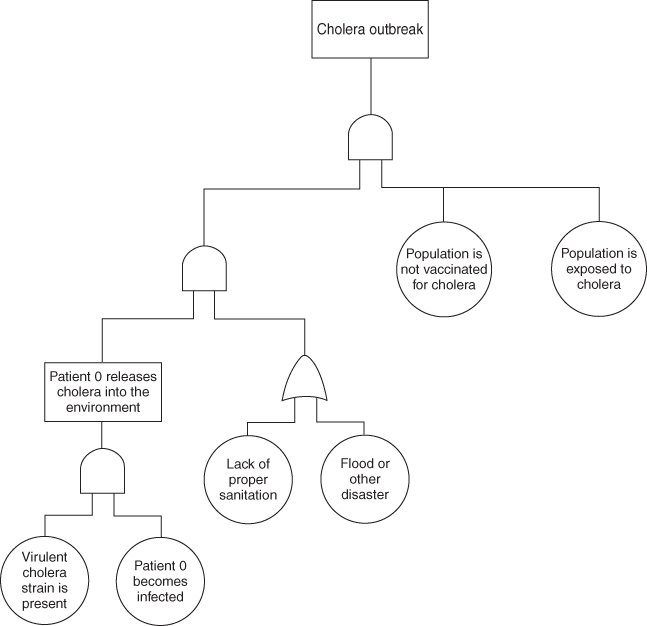20.1 Introduction
How do we calculate the risk of an epidemic? Over the course of recorded history, there have been thousands, if not tens of thousands, of epidemics. In many African countries, there is a yearly pattern of meningitis that occurs. In some years, there are more districts within a country that are affected and in some years, less, but it appears in recent years that there is a constant threat of a meningitis epidemic (1). Traditional risk assessment models are of little use in calculating the threat of an epidemic. It is possible to use a tool such as fault tree analysis to develop risk scenarios for epidemics, such as Cholera. Figure 20.1 shows how such a tree might appear. It shows that several factors have to come together before an epidemic can occur. It is almost impossible to quantify any of the basic events shown in this model. Epidemic models are used to calculate disease spread through a population, but quantifying the probability that an organism will infect a susceptible person is difficult to impossible (2).
Figure 20.1 Simplified cholera epidemic fault tree.

In reality, there is always a small risk that an endemic disease will erupt, creating an epidemic, and there is really no quantifiable measurement. The best way to think about the potential for epidemics is to consider the potential cause, that is, endemic in nature versus bioterrorism versus susceptible ...
Get Risk Assessment: Tools, Techniques, and Their Applications now with the O’Reilly learning platform.
O’Reilly members experience books, live events, courses curated by job role, and more from O’Reilly and nearly 200 top publishers.

